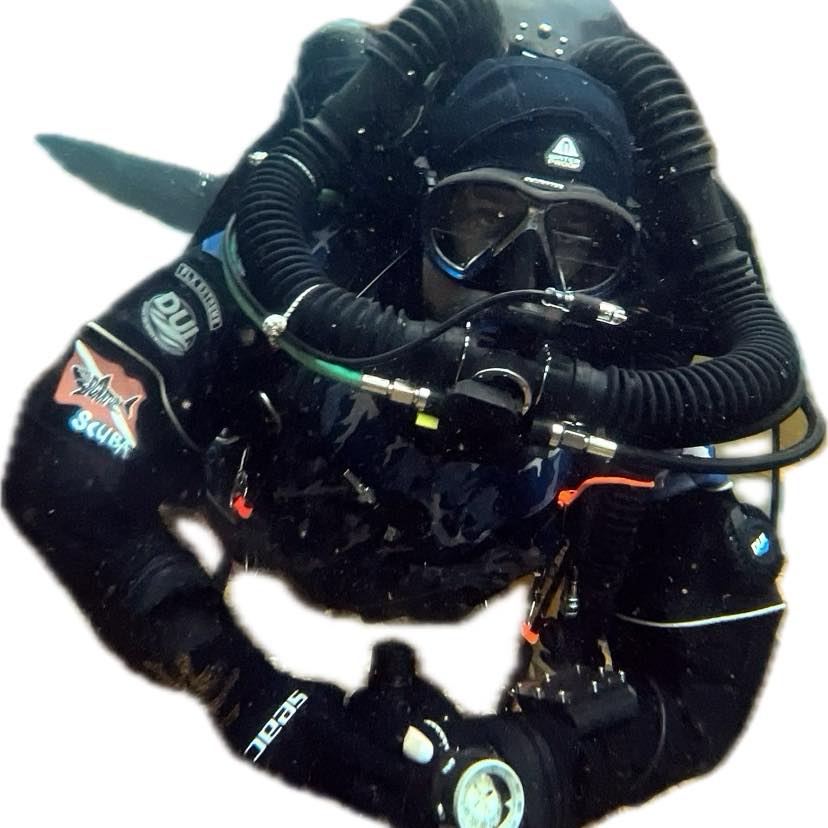Unlocking the Deep: Technical Scuba Diving in Southern California
James McMullin Apr 19, 2025
Unlocking the Deep: Technical Scuba Diving in Southern California
Southern California, with its breathtaking coastline, abundant marine life, and iconic kelp forests, offers more than just recreational scuba adventures—it’s a haven for technical divers. Whether you’re a seasoned diver or ready to take your skills to the next level, this region offers thrilling opportunities for deep diving, wreck exploration, and advanced gas management.
At the forefront of this experience is Signature Scuba, Rancho Cucamonga’s premier dive training center. Known for its expertise in technical diving and rebreather education, Signature Scuba equips divers to go beyond limits—safely and confidently.
Why Technical Diving?
Technical diving pushes past recreational limits, allowing divers to explore deeper depths, longer durations, and more complex environments. From submerged canyons to offshore wrecks, Southern California’s dive sites cater to adventurers ready for the challenge.
Key Advantages:
-
Access to deeper dive sites & shipwrecks
-
Use of specialized gas mixtures (Nitrox, Trimix, Heliox)
-
Advanced dive planning & decompression strategies
Understanding Mixed Gases: The Foundation of Technical Diving
▸ Nitrox
With a higher oxygen content than air, Nitrox extends bottom time and shortens surface intervals. While beneficial, it requires caution due to the risk of oxygen toxicity at depth.
▸ Trimix
A blend of oxygen, nitrogen, and helium, Trimix reduces narcosis and extends dive depth limits. Helium, with a density of only 0.17 g/L (compared to 1.25 g/L for nitrogen), makes deep diving safer and more manageable.
▸ Heliox
A mix of helium and oxygen, used for extreme depths where even small amounts of nitrogen could be harmful.
Understanding gas densities is crucial for dive planning:
| Gas | Density at STP |
|---|---|
| Oxygen (O₂) | 1.42 g/L |
| Nitrogen (N₂) | 1.25 g/L |
| Helium (He) | 0.17 g/L |
This knowledge affects buoyancy control, decompression management, and gas calculations, all vital for safe technical diving.
Decompression Theory: The Science Behind a Safe Ascent
The deeper you go, the more nitrogen dissolves into your tissues. A rapid ascent can cause this nitrogen to form bubbles—leading to decompression sickness.
Best Practices:
-
Ascent Rates: Controlled ascent (10 m/min or slower) is vital.
-
Safety Stops: 3–5 minutes at 5m (15ft) is standard for recreational dives.
-
Decompression Stops: Required for deeper or longer dives to safely off-gas.
Studies, including ODive Doppler monitoring, show that adding a 10-minute stop post-decompression can improve diver safety.
Rebreather Diving: The Future is Silent
Rebreathers revolutionize how we explore underwater. Unlike open-circuit systems, they recycle the breathing gas, removing CO₂ and injecting oxygen as needed.
Benefits of Rebreathers:
-
Extended bottom times
-
Minimal bubble output (great for photographers & researchers)
-
Greater gas efficiency
-
Lower environmental impact
Signature Scuba specializes in rebreather training, ensuring divers are prepared for the complexities of closed-circuit diving, including gas monitoring, loop control, and emergency procedures.
Dive Deeper with Signature Scuba in Rancho Cucamonga
Whether you're interested in mastering mixed gas theory, pursuing deep or wreck diving, or starting your journey into rebreathers, Signature Scuba offers expert instruction and personalized training in Rancho Cucamonga. Their emphasis on doing it right the first time ensures divers are well-prepared through every stage of learning—from cognitive, to associative, to autonomous.
Explore their offerings, meet passionate instructors, and take the plunge with confidence.
About the Author: James McMullin

James McMullin is the founder and lead technical diving instructor at Signature Scuba in Rancho Cucamonga, California. With over 20 years of diving experience and certifications through TDI, PADI, and IANTD, James has logged hundreds of deep dives and trained countless divers in everything from open water to advanced rebreather diving.
A strong advocate for education and safety, James is known for his no-compromise approach to technical training—grounded in the belief that mastering the fundamentals is key to a successful diving career. His classroom and in-water instruction combine real-world insights with science-based theory, offering divers a deep and lasting understanding of the sport.
Learn more or train with James at: www.signaturescubadiving.com
Contact: info@signaturescubadiving.com
Follow on Instagram: @signaturescuba
References & Resources
-
NOAA Diving Manual, 5th Edition
-
U.S. Navy Diving Manual
-
DAN (Divers Alert Network): www.diversalertnetwork.org
-
ODive Doppler Monitoring: Shearwater Research
-
PADI TecRec Program: www.padi.com/tecrec

